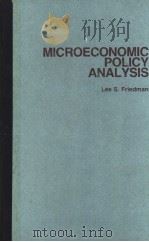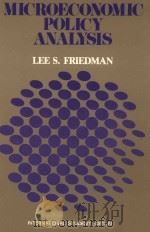《LEGAL POLICY ANALYSIS FINDING AN OPTIMUM LEVEL OR MIX》
| 作者 | 编者 |
|---|---|
| 出版 | LEXINGTON OOKS |
| 参考页数 | 329 |
| 出版时间 | 1977(求助前请核对) 目录预览 |
| ISBN号 | 0669007315 — 求助条款 |
| PDF编号 | 812922228(仅供预览,未存储实际文件) |
| 求助格式 | 扫描PDF(若分多册发行,每次仅能受理1册) |

Part Ⅰ Finding an Optimum Level1
Chapter 1 The Policy Problem of Doing Too Much or Too Little: Pretrial Release as a Case in Point9
Ⅰ.The Problems and the Data9
A.The Basic Problems to Resolve9
B.The Data to Work With10
Ⅱ.A Causal Model Showing the Effects of Increasing the Percentage of Defendants Held15
A.The Basic Causal Model15
B.Compared to Alternative Causal Mod-els19
Ⅲ.Finding an Optimum Percent of Defen-dants to Hold Pending Trial23
A.With Linear Relations among the Variables24
B.With Nonlinear Relations among the Variables25
C.The Bottom Point on the Total-Cost Curve27
Ⅳ.A Causal Model Showing the Effects of Cost Changes on the Optimum Percent to Hold29
A.Determining the Direction of the Ef-fects30
B.Determining the Magnitude of the Ef-fects32
C.Diagramming, Summarizing, and Indi-vidualizing the Model34
Ⅴ.Further Policy, Causal, and Methodolog-ical Implications37
A.The Optimum versus the Empirical38
B.Expanded Causal Model with Further Policy Implications43
C.Expanded Applications to Other Poli-cy Problems46
Appendix 1A.Glossary of Terms67
Appendix 1B.Basic Formulas Used71
Chapter 2 Using Deductive Modeling to Determine an Opti-mum Jury Size and Fraction Required to Convict75
Ⅰ.The Basic Problems to Resolve75
A.Inability of Empirical Data to Indi-cate Effects of Jury Size75
B.Deductive Analysis to Indicate Ef-fects of Jury Size78
Ⅱ.The Basic Data to Use79
A.The Probability of Convicting an Average Defendant79
B.The Probability of Convicting an In-nocent or a Guilty Defendant81
C.The Number of Innocent and Guilty Defendants per 100 Defendants82
D.Summary and Consistency of the Ba-sic Data84
Ⅲ.Optimizing Jury Size85
A.Effects of Changes in Jury Size on Jury Errors85
B.The Optimum Jury Size When Con-victions of the Innocent Are Consid-ered 10 Times as Undesirable as Nonconvictions of the Guilty88
Ⅳ.Optimizing the Fraction Required to Convict90
A.Effects of Changes in the Fraction Required to Convict on Jury Errors90
B.The Optimum Fraction Required to Convict with a Trade-Off Weight of 1093
Ⅴ.Effects of Changing the Normative and Empirical Premises95
A.Effects of Changing the Normative Premises on the Optimum Unanimous Jury Size95
B.Effects of Changing the Empirical Premises on the Optimum Unanimous Jury Size99
C.Effects of Changing the Premises on the Optimum Nonunanimous Fraction Required to Convict103
Ⅵ.The Independent-Probability Perspective versus the Collective-Mind Perspective105
A.Calculating Conviction Probabilities Using an Unweighted Average for the Two Perspectives106
B.Calculating Conviction Probabilities Using a Weighted Average for the Two Perspectives107
C.Revised Data and Results110
Ⅶ.Variations on the Basic Model115
A.Effect of Jury Size on Representa-tiveness that Affects Conviction Probabilities115
B.Other Variations118
Ⅷ.Conclusions126
Appendix 2A.Glossary of Terms151
Appendix 2B.Basic Formulas Used155
Appendix 2C.The Impact of Jury Size on the Probability of Conviction157
Part Ⅱ Finding an Optimum Mix among Competing Policies159
Chapter 3 Developing an Optimum-Mix Strategy for Civil Rights or Other Multipolicy Activities163
Ⅰ.Basic Ideas163
A.The General Purposes and the Data163
B.The Substantive Problem and the Ba-sic Methodology164
Ⅱ.Scoring the Cities and the Activities165
Ⅲ.Finding an Optimum Mix between Two Civil Rights Activities171
A.Equal-Benefit Lines171
B.Optimum Allocation Points within Constraints172
C.Other Two-Activity Allocation Prob-lems176
Ⅳ.Finding an Optimum Mix among Six Civ-il Rights Activities177
A.Reading the Multiple-Activity Graph177
B.Finding the Optimum Allocations180
Ⅴ.The Substantive Meaning of the Correla-tion and Regression Coefficients183
A.The Role of Outside Variables like Region183
B.Negative Regression Coefficients and Causal Models187
Ⅵ.Input-Output Analysis Applied to Civil Rights Activities189
A.Working with a Variance-Accounted-for Matrix190
B.Working with a Regression-Coeffi-cients Matrix195
Ⅶ.Some Conclusions198
Appendix 3A.The Racial Discrimination Ques-tionnaire and the Average Response to Each Item209
Appendix 3B.Cities Used in the Analysis217
Appendix 3C.Glossary of Terms219
Appendix 3D.Basic Formulas Used223
Chapter 4 Finding an Optimum Geographical Allocation for Anticrime Dollars and Other Governmental Expenditures225
Ⅰ.Basic Ideas225
A.Goal to Optimize225
B.General Allocation Procedures226
Ⅱ.Allocation When Linear or Constant Re-lations Exist between Dollars Spent and Crimes Reduced228
A.With Data for Two Time-Points for Each Place228
B.With Data for One Time-Point for Each Place232
C.With Data for Three or More Time-Points for Each Place234
Ⅲ.Allocating When Nonlinear or Diminish-ing Relations Exist between Dollars Spent and Crimes Reduced237
A.With Data for Two Time-Points for Each Place238
B.With Data for One Time-Point for Each Place242
C.With Data for Three or More Time-Points for Each Place243
Ⅳ.Controlling for Demographic, Socioeco-nomic, and Other Variables245
A.The New Goal Variable of Reducing Crimes Not Explained by Demogra-phy245
B.The Use of the New Goal Variable to Calculate Linear and Nonlinear Slopes and to Reduce Positive Slopes247
Ⅴ.Comparing Geographical Allocation with Activity and Functional Allocation250
A.Linear and Nonlinear Activity Alloca-tion250
B.Similarities, Differences, Variations,and Choosing between Geographical and Activity Allocation251
Ⅵ.Miscellaneous Variations on the Basic Model254
A.Dealing with Inequality Constraints254
B.Dealing Differently with Crimes, Peo-ple, or Other Entities in Different Places256
Ⅶ.Some Conclusions258
Appendix 4A.Glossary of Terms271
Appendix 4B.Basic Formulas Used273
Part Ⅲ Problems that Can Be Viewed as Optimum-Mix or Optimum-Level Problems275
Chapter 5 A Linear-Programming Approach to Problems of Conflicting Legal Values, Like Free Press ver-sus Fair Trial281
Ⅰ.The Problem and the Data281
Ⅱ.Scoring the Cities and Respondents282
A.On the Occurrence of Free Press and Fair Trial282
B.On Satisfaction with Free Press and Fair Trial285
Ⅲ.The Problem Graphed286
A.The Axes and the Consumption-Pos-sibility Line286
B.The Legal Constraints288
Ⅳ.Some Solutions to the Problem289
A.For All Responding Groups Com-bined289
B.For Each Group Separately291
Ⅴ.Some Alternative or Supplementary Per-spectives on the Problem293
A.Emphasizing Optimum Level rather than Optimum Mix293
B.A Nonlinear, Diminishing-Returns Perspective297
C.Finding an Optimum Mix among Ap-proaches to Reducing Prejudicial Crime Reporting298
Ⅵ.Some Conclusions299
Appendix 5A.Glossary of Terms309
Appendix 5B.Basic Formulas Used311
Appendix 5C.Deriving a Multivariate Regres-sion Equation Where X1 + X2 = 1.0313
Index of Names317
Index of Subjects321
About the Authors329
1977《LEGAL POLICY ANALYSIS FINDING AN OPTIMUM LEVEL OR MIX》由于是年代较久的资料都绝版了,几乎不可能购买到实物。如果大家为了学习确实需要,可向博主求助其电子版PDF文件(由 1977 LEXINGTON OOKS 出版的版本) 。对合法合规的求助,我会当即受理并将下载地址发送给你。
高度相关资料
-
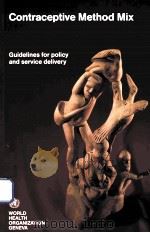
- CONTRACEPTIVE METHOD MIX GUDELINES FOR POLICY AND SERVICE DELIVERY
- 1994 WORLD HEALTH ORGANIZATION
-

- AN ASSESSMENT OF THE CONTRACEPTIVE METHOD MIX IN MYANMAR
- 1997 WORLD HEALTH ORGANIZATION
-
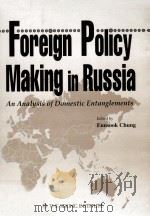
- Foreign Policy Making in Russia An analysis of domestic entanglements
- 1998 The Sejong institute
-

- ENVIRONMENTAL POLICY ANALYSIS
- 1996 AVEBURY
-

- U.S. NATIONAL HEALTH POLICY AN ANALYSIS OF THE FEDERAL ROLE
- 1984 PRAEGER PUBLISHERS
-
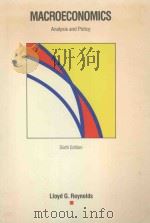
- MACROECONOMICS ANALYSIS AND POLICY
- 1988 IRWIN
-

- AN INTRODUCTION TO ECONOMIC ANALYSIS AND POLICY SECOND EDITION
- 1937 OXFORD UNIVERSITY PRESS
-

- FONTANA MIX
- EDITION PETERS
-

- EDUCATION POLICY ANALYSIS 1998
- 1998 ORGANISATION FOR ECONOMIC CO-OPERATION AND DEVELOPMENT
提示:百度云已更名为百度网盘(百度盘),天翼云盘、微盘下载地址……暂未提供。➥ PDF文字可复制化或转WORD
